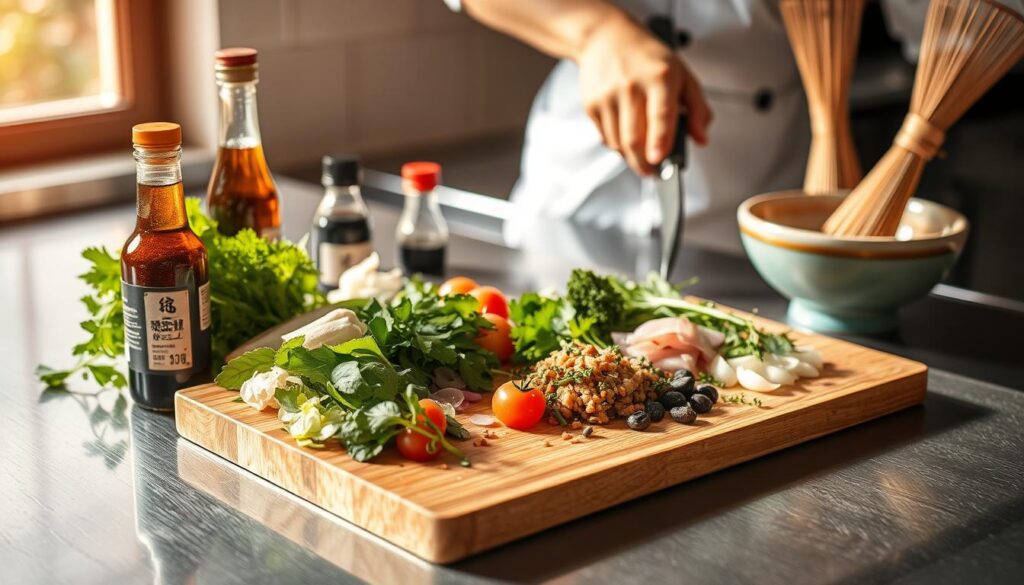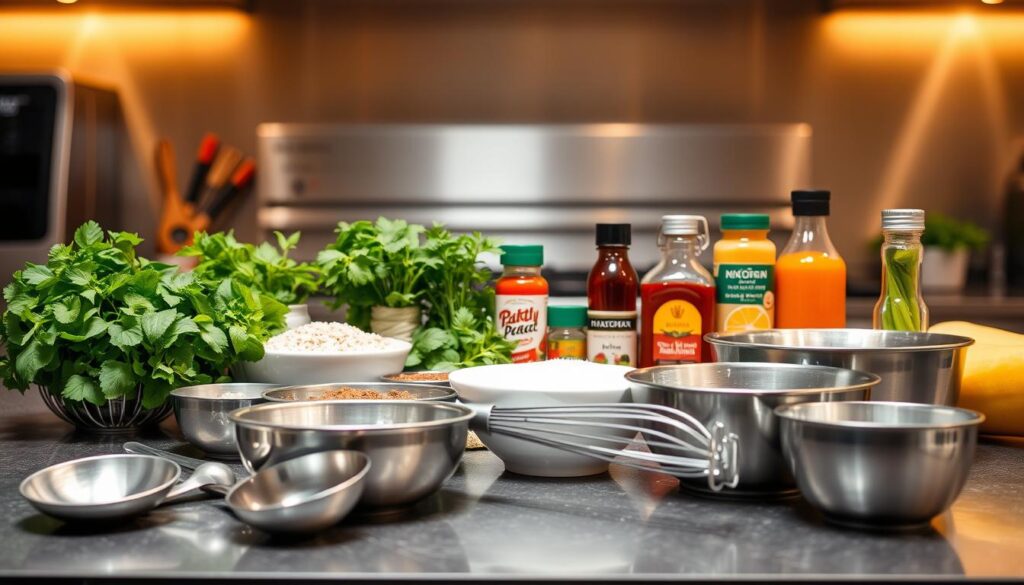Have you ever wondered how a simple drizzle of sauce can elevate a dish from ordinary to extraordinary? Omakase sauces are the secret weapon in many chefs’ arsenals, offering a burst of flavor that complements a variety of cuisines, from sushi to dumplings and beyond.
Imagine a world where every bite is a perfect balance of sweet, savory, and tangy. Today, we’re diving into five must-try sauce recipes that will take your cooking to the next level. Whether you’re a sushi lover or a fan of Asian-inspired meals, these sauces are sure to inspire your culinary creativity.
From the versatility of a 3-2-1 dipping sauce to the rich complexity of a traditional Nikiri sauce, and even a quick soy-based option, we’ve got you covered. Each recipe uses quality ingredients and scientific ratios to ensure the perfect harmony of flavors. These sauces are not just for experts; they’re designed for anyone looking to add a professional touch to their home-cooked meals.
So, why settle for bland when you can create something extraordinary? Let’s explore these easy yet elegant recipes and unlock the full potential of your dishes.
Key Takeaways
- Explore five versatile omakase sauce recipes to enhance your dishes.
- Discover sauces perfect for sushi, dumplings, and Asian-inspired meals.
- Learn how to balance sweet, savory, and tangy flavors with quality ingredients.
- Master both modern and traditional techniques for sauce preparation.
- Find detailed instructions and ingredient ratios for perfect results.
Introduction to Omakase Sauces
Omakase, a Japanese term meaning “I leave it to you,” is a culinary tradition where chefs craft dishes with precision and artistry. This approach extends to sauces, which are meticulously prepared to enhance the dining experience.
Understanding the Omakase Tradition
In sushi restaurants, Omakase often involves the chef selecting ingredients and presenting them with complementary sauces. These sauces are crafted to balance flavors, ensuring each bite is harmonious. Chefs spend years perfecting these recipes, blending traditional methods with modern twists.
Cultural Impact on Sushi and Dumpling Flavors
The cultural significance of sauce preparation is profound. For instance, Nikiri, a sweet soy sauce, is gently brushed on nigiri to create the perfect balance of flavors. This attention to detail reflects the respect for tradition and the pursuit of culinary excellence.
Traditional techniques, such as the careful preparation of Nikiri, influence both presentation and flavor. These methods contribute to a memorable dining experience, making each dish a masterpiece of taste and aesthetics.
Modern chefs honor these traditions while experimenting with new ingredients. By doing so, they maintain the essence of Omakase while innovating for contemporary palates. Each ingredient’s role is crucial, and precise preparation ensures authentic sauce profiles that elevate any dish.
Guide to the best 5 omakase sauce recipe
Creating the ideal sauce can transform any dish, adding depth and complexity to your culinary creations. Whether you’re preparing sushi or Asian-inspired dishes, the right sauce makes all the difference. Let’s explore how to craft these sauces like a pro.
Understanding Sauce Profiles and Ratios
A great sauce balances sweet, savory, tangy, and umami flavors. For a classic Asian dipping sauce, try the 3-2-1 ratio: 3 parts soy sauce, 2 parts rice vinegar, and 1 part sesame oil. This blend is versatile and enhances any dish, from sushi to dumplings.

Nikiri sauce, a traditional option, uses a reduction of soy sauce, sake, and mirin. It’s brushed on nigiri for a delicate, sweet note that complements the fish without overpowering it.
Step-by-Step Preparation Tips
Start by mixing your ingredients in a small bowl until well combined. For the best flavor, chill the sauce for at least an hour to allow the ingredients to meld. When preparing Nikiri, simmer the mixture until it’s slightly thickened, stirring occasionally to prevent burning.
Quality ingredients are key. Use premium soy sauce and fresh ginger for optimal taste. If you’re low on rice vinegar, apple cider vinegar makes a good substitute. Adjust the ratios to your taste for the perfect balance.
Essential Ingredients and Techniques for Flavorful Sauces
Creating memorable sauces involves more than just mixing ingredients. It’s about understanding the elements that bring out the best flavors and presenting them in a way that enhances the dining experience.
Selecting the Right Soy Sauce and Alternatives
High-quality soy sauce is the backbone of many sauces. Opt for a premium brand like Kikkoman for depth and richness. If you’re looking for alternatives, tamari offers a gluten-free option without compromising on flavor.
Mastering Classic Techniques
Awase Dashi is a foundational broth made by simmering konbu and bonito flakes. This dashi serves as a robust base for various sauces. For Nikiri, combine soy sauce, sake, and mirin, then reduce the mixture until slightly thickened. Strain it through a coffee filter for clarity and depth.
Presentation and Serving Suggestions
Presentation is key. Serve sauces in small, individual bowls to add an artistic touch. Let each element shine on the plate, making the dish visually appealing as well as delicious.

Each ingredient plays a vital role in building layers of flavor. From the umami of dashi to the sweetness of mirin, every component ensures your sauces are both tasty and visually stunning.
Feel free to experiment with available ingredients or personal preferences. This flexibility encourages creativity in the kitchen, making each sauce uniquely yours.
By mastering these techniques, you can transform simple dishes into gourmet experiences. Whether it’s for sushi or other Asian-inspired meals, these sauces will elevate your cooking to new heights.
Conclusion
With these carefully crafted recipes, you now have the tools to elevate your dishes with flavors that impress. Whether you’re preparing sushi, dumplings, or stir-fries, these sauces offer versatility and depth to enhance any meal. The key to success lies in balanced flavor profiles, quality ingredients, and precise techniques.
Feel free to experiment with the recipes, adding your personal touch while respecting traditional methods. Remember, achieving restaurant-quality results at home is both achievable and rewarding. Take the first step, try out these recipes, and share your creations with friends and family. Don’t hesitate to revisit this guide for more inspiration and tips on perfecting your sauce-making skills.


